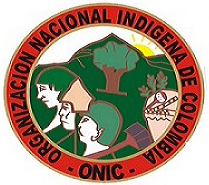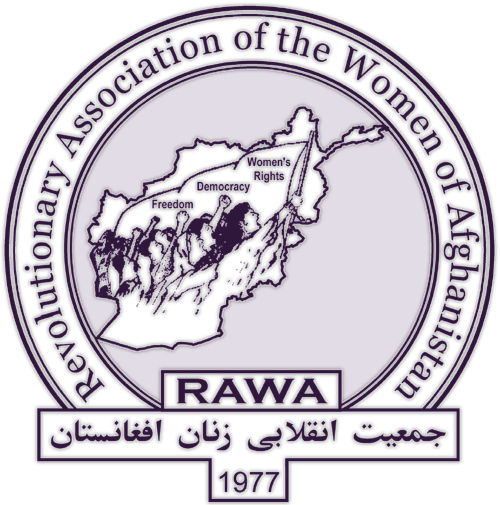mining
Brazil: Canadian gold mine loses license
Brazilian federal judge Claudio Henrique de Pina has revoked Toronto-based Belo Sun Mining Corp.'s environmental license for the construction of the $750 million Volta Grande open-pit gold mine near the Xingu river in the northern state of Pará, the federal Public Ministry office in the state announced June 25. Upholding a suspension ordered last November, the judge ruled that Belo Sun had failed to address "negative and irreversible" impacts the mine would have on three indigenous groups in the area, the Paquiçamba, Arara da Volta Grande and Ituna/Itatá. The communities are already under threat from the construction of the Belo Monte dam, which will cut water flows by 80% to 90% when it goes into operation, according to the government's National Indigenous Foundation (FUNAI).
Colombia: security workers blockade coal mine
Workers from the Sepecol private security firm blocked the rail line leading from the mammoth Cerrejón coal mine in northeastern Colombia's La Guajira region for seven days over a contract dispute, before the company agreed to enter a dialogue over their demands June 26. The workers, who are mainly from the indigenous Wayuu group, launched their protest after the termination of the contract between Sepecol and Colombia's largest coal mining company. According to a company statement, the blockade of the rail line linking the mine to Puerto Bolívar was putting export obligations at risk. In announcing the dialogue, the company agreed to maintain 80% of its 770-strong security force from Sepecol and local firm Vigilancia Guajira. (El Heraldo, Barranquilla, June 28; Colombia Reports, EFE, June 26)
Canada's high court upholds aboriginal title
First nations across British Columbia are celebrating a unanimous ruling by the Supreme Court of Canada on June 26 that recognizes aboriginal title to their traditional territories outside reserves. The court upheld the Tsilhqot'in Nation's claim to lands in the Nemiah Valley, some 160 miles north of Vancouver, rejecting the provincial government's argument that aboriginal title should be restricted to actual settlement sites and other places frequently occupied by semi-nomadic native peoples. Joe Alphonse, chief of the Tsilhqot'in Nation, said the ruling is a victory in a struggle that had its roots in deadly conflict with a wave of Gold Rush settlers during the 1860s. He said the communities need more control over resources to support more people living on reserves. "We didn't fight in this case to separate from Canada," Alphonse told a news conference in Vancouver. "We fought in this case to get recognized, to be treated as equals in a meaningful way."
Peru: prison for regional leader who opposed mine
Gregorio Santos, regional president of Cajamarca in northern Peru, was ordered to turn himself in for "preventative" imprisonment by a local anti-corruption prosecutor on June 17. The prosecutor, Walter Delgado, said Santos is under investigation by Peru's Public Ministry for "illicit association" and bribery, although no details were provided. (La Republica, June 17) The left-wing Santos has been an outspoken opponent of the US-backed Conga mining project in Cajamarca. With Santos' support, the Conga site has for months been occupied by peasant protesters who oppose the mine project. A major mobilization was held at the site on June 5, to commemorate World Environment Day. (Celedín Libre, June 7)
Venezuela: Amazon indigenous protest mining law
Meeting June 2 in Puerto Ayacucho, Amazonas state, Venezuela's Coordinating Body of Indigenous Organizations of Amazonas (COIAM) issued a statement protesting President Nicolás Maduro's Decree No. 841 of March 20, which creates a commission to oversee bringing illegal gold-miners in the rainforest region under government control. The program falls under the Second Socialist Plan for the Nation, charting development objectives from 2013 through 2019, with an emphasis on the "Orinico Mineral Arc." But the mining has caused grave ecological, cultural and health impacts on the Yanomami and other indigenous peoples of the area. COIAM is demanding a moratorium on all mineral activity in the Guayana administraive region, which covers the southern Orinoco basin in Amazonas and the adjacent states of Bolívar and Delta Amacuro. (See map.) (Sociedad Homo et Natura, June 9; COIAM, June 2; Survival International, Nov. 7, 2013)
Chile: HidroAysén dam project is scrapped
Chile's environment, energy, agriculture, mining, economy and health ministers voted unanimously at a June 10 meeting to terminate plans for the $8 billion HidroAysén hydroelectric project, a complex of five dams that was to be built on the Baker and Pascua rivers in the Aysén region in southern Patagonia. Environmentalists and many area residents had vigorously opposed the project since it was first proposed in August 2007. HidroAysén supporters said the dams were necessary to meet energy requirements for the country, which currently gets about 40% of its power from hydroelectric projects. But Socialist president Michelle Bachelet, who began her second term on Mar. 11, has indicated that her government will push instead for more use of alternative sources and for the importation of liquefied natural gas. The companies behind the project—the Spanish-Italian electric energy consortium Endesa-Enel, which owns 51%, and the Chilean company Colbún S.A.—have 30 days to appeal the ministers' decision.
Mexico: more narco-mineral exports seized
Mexican authorities on May 1 announced the seizure of a ship carrying 68,000 tons of illegal iron ore bound for China—hailed as the latest blow in a crackdown on the contraband mineral sideline by the Knights Templar drug cartel. Federal police were apparently tipped off by an anonymous phone call after the ship left Lazaro Cárdenas, the Pacific port in conflicted Michoacán state. Authorities detained the ship, the Jian Hua, off Manzanillo, the next major port up the coast, in neighboring Colima state. The ship's crew produced documents showing it had authorization to transport the iron ore. But authoriites said the paperwork listed a legal mine that was not the actual source of the contraband ore. The company operating the ship, China's Fujian Huarong Marine, has been given one month to prove to authorities that the ore was extracted legally. Mexican authorities say they have seized more than 200,000 tons of illegal iron ore so far this year, most of it headed for China.
Philippines: indigenous peoples pledge resistance
Speaking to reporters May 14 from an undisclosed location somewhere in the mountains of Talaingod, Davao del Norte province, on the southern Philippine island of Mindanao, a group of traditional indigenous elders, or datu, said: "We want peace here in Talaingod. But if they take away our land, we will fight. We will fight with our native weapons." The group was led by Datu Guibang Apoga, who has been a fugitive from the law since 1994, when he led a resistance movement of the Manobo indigenous people against timber and mineral interests, fighting company personnel and security forces with bows and arrows and spears. Wearing their traditional outfits, the tribal leaders threatened to return to arms unless the Philippine government demilitarizes their lands and respects Manobo territorial rights.















Recent Updates
5 hours 39 min ago
6 hours 4 min ago
13 hours 24 min ago
15 hours 6 min ago
1 day 6 hours ago
1 day 14 hours ago
3 days 7 hours ago
3 days 8 hours ago
3 days 12 hours ago
3 days 12 hours ago